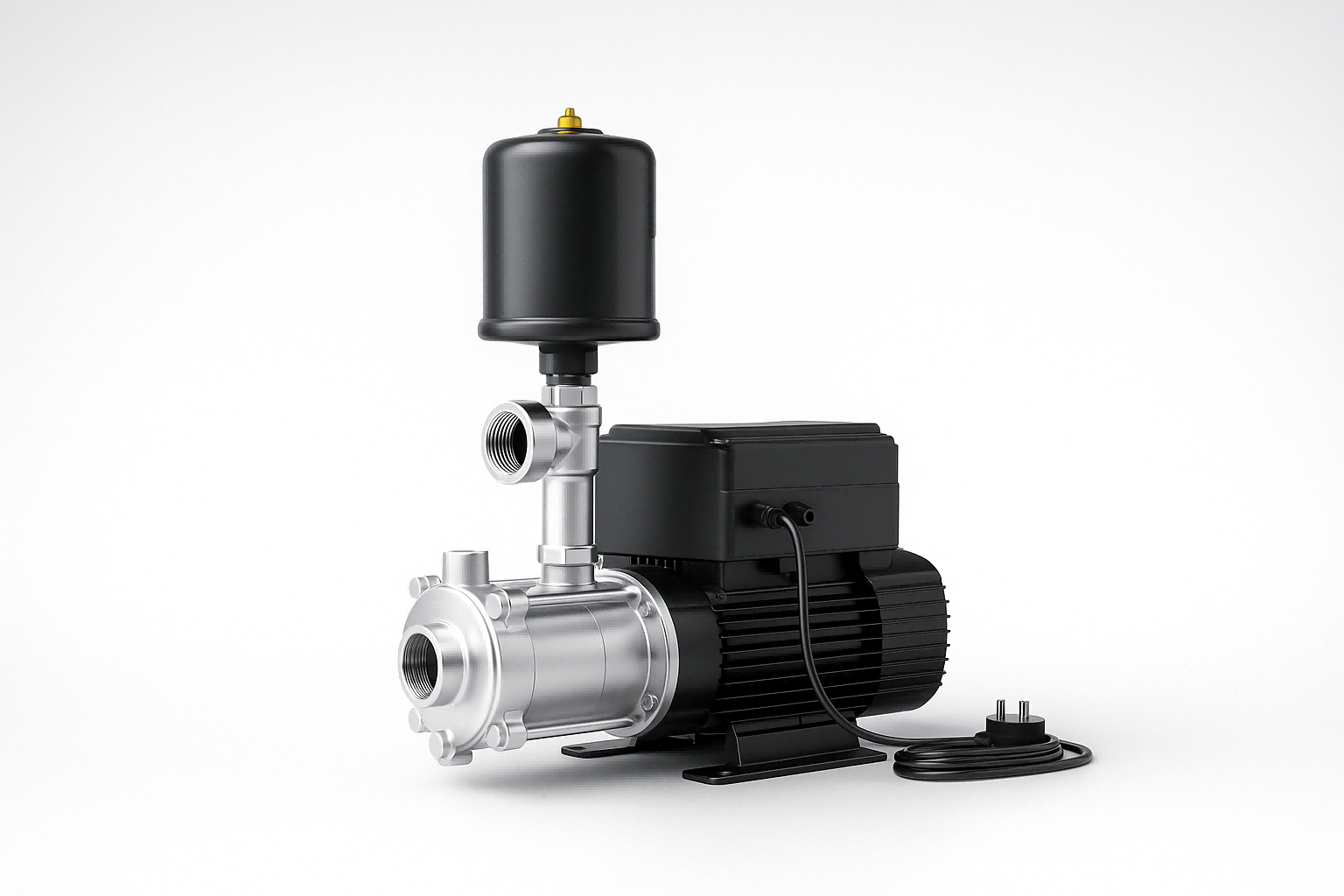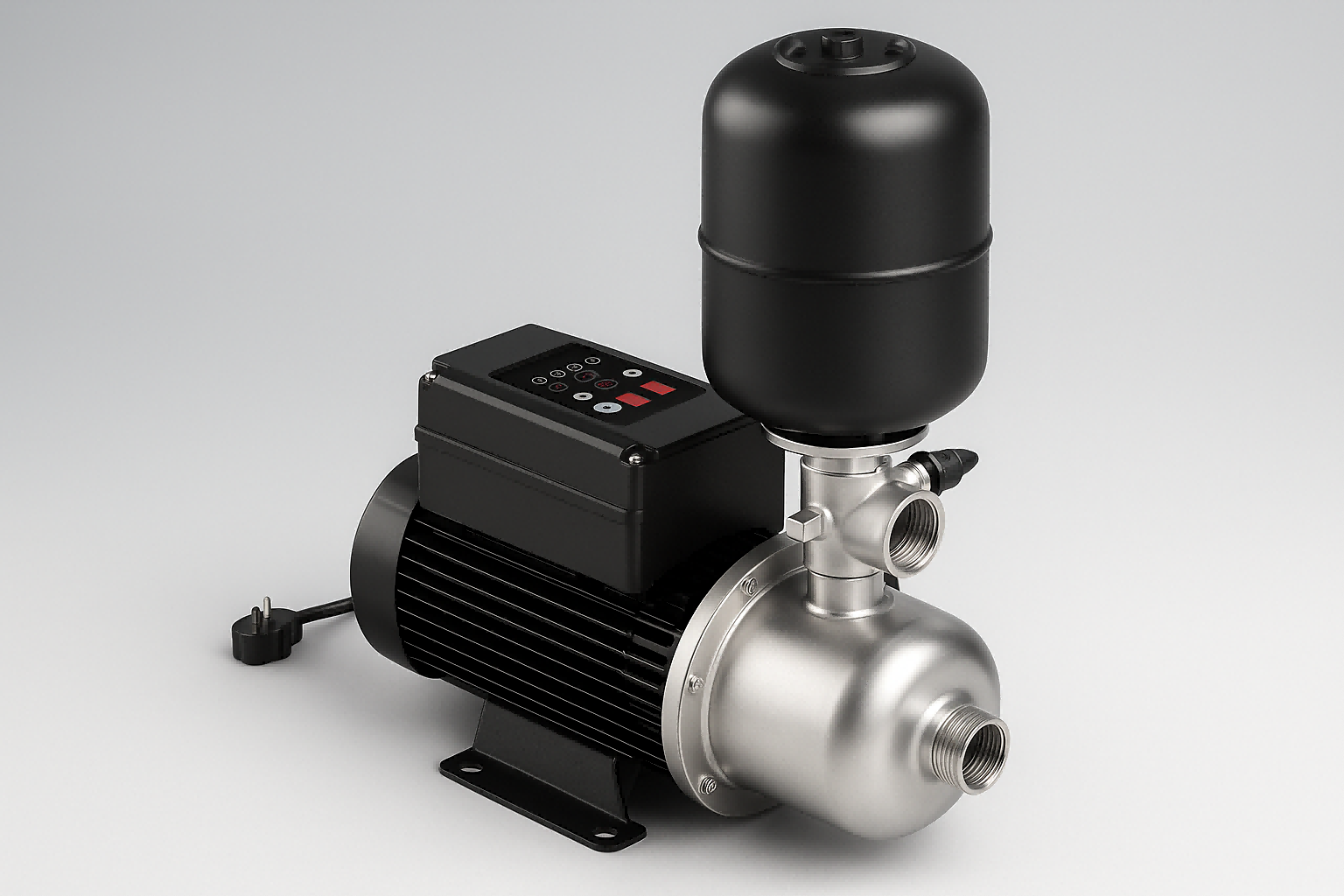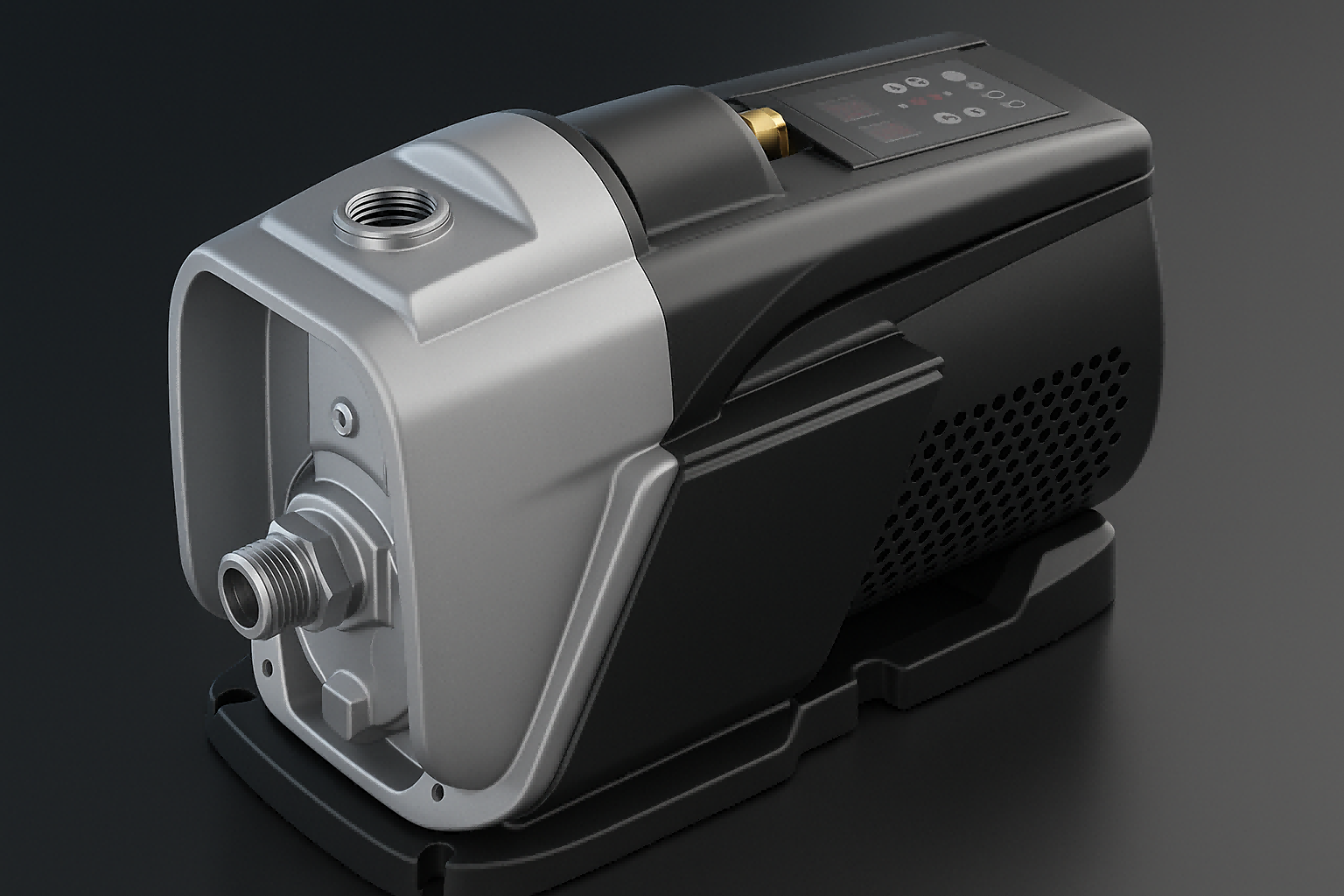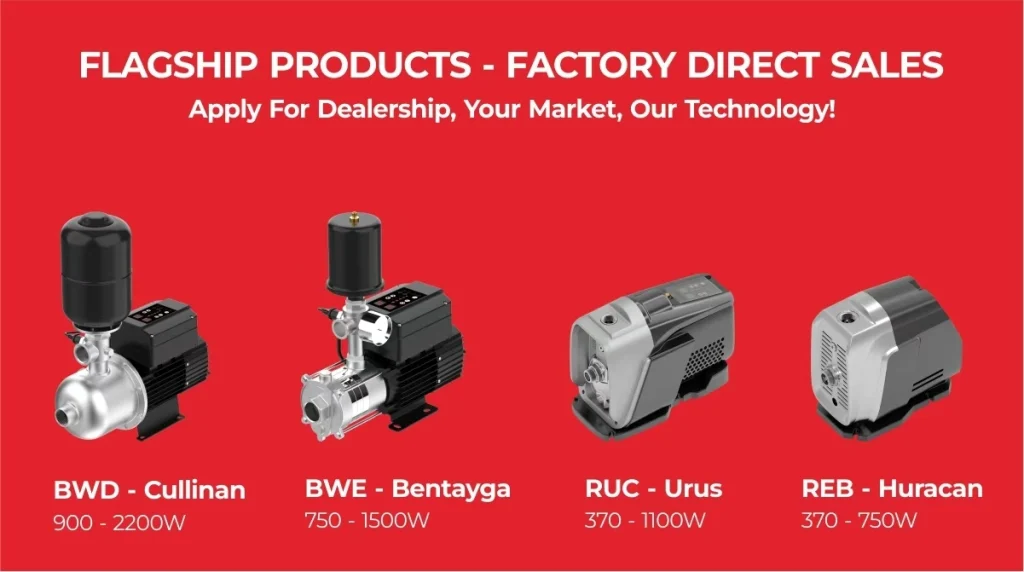Confused about pumps and motors?
This common mix-up can lead to costly mistakes in your system.
Let’s clarify their distinct roles for you.
A motor converts electrical energy into mechanical energy (rotation). A pump uses this mechanical energy to move fluids like water. In short, the motor powers the pump, but the pump does the actual work of moving liquid. They are two separate but interdependent components.

Understanding this fundamental difference is crucial.
Many people use the terms interchangeably, but they perform opposite functions.
One creates power, and the other uses that power to perform a specific task.
This article will break down each component, explore their relationship, and explain why knowing the difference is vital for anyone working with fluid systems.
We will dive deep into their functions, types, and applications to give you a complete picture.
Let’s get started.
What is a Pump? The Heart of Fluid Movement
Struggling with moving liquids efficiently?
An incorrect pump choice can cause low pressure or system failure.
Pumps are the solution for transferring fluids from one place to another.
A pump is a mechanical device designed to move fluids (liquids, gases, or slurries). It does this by using mechanical action, often from a rotating impeller or a reciprocating piston. The pump itself does not create power; it uses power to create flow and pressure.
A pump is the workhorse of any fluid handling system.
Its primary job is to impart energy to a fluid.
This energy transfer increases the fluid's pressure.
The added pressure is what forces the fluid to move through pipes and other components.
Think of a pump as the heart of your water system.
The heart does not create its own energy.
It uses energy from the body to pump blood.
Similarly, a mechanical pump uses energy from an external source to move water.
This distinction is the first step in understanding its role.
The Core Function of a Pump
The main goal of a pump is simple.
It is to move a fluid from a point of lower pressure or elevation to a point of higher pressure or elevation.
Pumps achieve this through two main mechanisms.
These are dynamic (centrifugal) action or positive displacement.
Let's explore these ideas.
Types of Pump Mechanisms
Pumps are not all the same.
They are categorized based on how they move fluid.
The two largest categories are Dynamic Pumps and Positive Displacement Pumps.
Understanding these helps in selecting the right tool for the job.
-
Dynamic Pumps (Centrifugal Pumps)
- These are the most common type.
- They use a rotating impeller to increase fluid velocity.
- As the fast-moving fluid exits the impeller, the velocity is converted into pressure.
- They are great for high flow rates and low-viscosity fluids like water.
- An example is a standard booster pump for a house.
-
Positive Displacement Pumps
- These pumps trap a fixed amount of fluid.
- They then force (displace) that trapped volume into the discharge pipe.
- They deliver a constant flow regardless of system pressure.
- These are ideal for high-pressure applications or for pumping thick, viscous fluids.
- Examples include piston pumps and diaphragm pumps.
The table below gives a simple comparison.
| Feature | Dynamic (Centrifugal) Pump | Positive Displacement Pump |
|---|---|---|
| Mechanism | Impeller adds velocity to fluid | Traps and displaces a fixed volume |
| Flow Rate | Variable, depends on pressure | Constant, independent of pressure |
| Best For | High flow, low pressure | Low flow, high pressure |
| Fluid Type | Low-viscosity fluids (water) | High-viscosity fluids (oils) |
| Common Example | VSD Booster Pump | Piston Pump |
Choosing the right pump type is critical for efficiency and system longevity.
A centrifugal pump in a high-viscosity application will perform poorly and fail quickly.
A positive displacement pump might be overkill for a simple water transfer task.
Knowing the fundamental mechanism helps you make an informed decision.
What is a Motor? The Powerhouse Behind the Action
Need to make something move?
Without a power source, your equipment is just a static object.
A motor is the device that provides the necessary rotational force.
A motor is a machine that converts electrical energy into mechanical energy. This mechanical energy is almost always in the form of a rotating shaft. The motor's sole job is to create this motion, which then drives other machines, like pumps, fans, or conveyors.
A motor is the prime mover in countless applications.
It is the engine that drives the process.
If a pump is the heart, the motor is the body's metabolism converting food into energy.
The motor takes electrical power from an outlet or a grid.
It uses principles of electromagnetism to create a rotating magnetic field.
This field forces a central shaft, called a rotor, to spin.
This spinning motion is the mechanical power that the system needs.
Without the motor, the pump would have no energy to perform its function.
This is why they are so often found together.
How an Electric Motor Works
The magic of a motor lies in electromagnetism.
It's a beautiful application of physics.
Let's break down the basic components and process.
Key Components of a Motor
Every basic electric motor has a few core parts.
These parts work together to turn electricity into motion.
Here are the essential ones:
- Stator: This is the stationary part of the motor. It contains coils of wire. When electricity passes through these coils, it creates a magnetic field.
- Rotor: This is the rotating part of the motor. It is connected to the output shaft. The magnetic field from the stator pushes against the rotor, causing it to spin.
- Shaft: The shaft is the central rod that protrudes from the motor. It is the part that connects to the pump or other device to transfer the mechanical energy.
- Bearings: These support the rotor and allow it to spin freely with minimal friction.
The Conversion Process: Electricity to Motion
The process is a continuous cycle.
- Electrical current flows into the stator's wire windings.
- This creates a powerful, rotating magnetic field within the motor housing.
- This magnetic field interacts with magnets or conductors on the rotor.
- The interaction creates a force, known as torque, that pushes the rotor to spin.
- The spinning rotor turns the connected shaft.
- The shaft then drives the pump's impeller or other mechanism.
Different types of motors exist, such as AC (Alternating Current) and DC (Direct Current) motors.
AC motors are common in industrial and residential applications powered by the grid.
DC motors are often used in battery-powered or solar applications.
The fundamental principle of converting electrical energy to mechanical motion remains the same.
It is this conversion that defines a motor.
How Do Pumps and Motors Work Together?
Your system has no power or no flow.
Pairing the wrong motor and pump leads to inefficiency or complete failure.
The solution is a perfectly matched motor-pump assembly.
A motor and pump work together in a direct partnership. The motor's rotating shaft is connected to the pump's shaft, typically via a coupling. The motor provides the rotational power, and the pump uses that power to move fluid, creating a complete functional unit.
The relationship between a pump and a motor is one of cause and effect.
The motor is the cause of the motion.
The pump is the effect of that motion.
They are almost always found side-by-side, forming a single piece of equipment.
In many smaller units, like a household booster pump, they are housed in the same casing.
This makes them look like a single device, which is a common source of confusion.
But even when they are integrated, they are still two distinct components with different jobs.
The motor's performance directly dictates the pump's potential.
Let's see how this connection works in detail.
The Drivetrain: Connecting Power to Action
The connection point is where the magic happens.
It's where the energy transfer is made physical.
There are a few ways to connect a motor to a pump.
Sizing and Matching
You cannot pair just any motor with any pump.
They must be carefully sized and matched to work efficiently and reliably.
This is a critical step for system designers and engineers.
Several factors must be considered.
- Power (HP or kW): The motor must have enough power to meet the pump's demand. The pump's requirement is determined by the desired flow rate and pressure. An underpowered motor will overheat and fail. An overpowered motor wastes energy and money.
- Speed (RPM): The motor's rotational speed (revolutions per minute) must match the pump's optimal operating speed. A pump running too fast can be damaged, while a pump running too slow will not perform as needed.
- Torque: The motor must provide enough turning force (torque) to start the pump, especially when the pump is full of liquid.
- Physical Fit: The motor shaft and pump shaft must align perfectly. The mounting flanges must also match to ensure a secure connection.
The table below shows what happens with mismatched components.
| Mismatch Scenario | Result |
|---|---|
| Motor Power Too Low | Motor overheats, trips breaker, fails prematurely. |
| Motor Power Too High | Wasted electricity, higher initial cost. |
| Motor Speed Too Fast | Pump damage (cavitation), excessive wear, noisy operation. |
| Motor Speed Too Slow | Low flow and pressure, system doesn't meet demand. |
In modern systems, like Variable Speed Drive (VSD) pumps, this relationship is even more sophisticated.
A VSD acts as a smart controller for the motor.
It adjusts the motor's speed in real-time based on the system's demand.
This ensures the pump only works as hard as necessary.
This saves significant amounts of energy and extends the life of both the motor and the pump.
Key Differences: Energy Conversion vs. Fluid Transfer
Still mixing up the two terms?
This basic confusion can undermine your credibility and lead to errors.
Let’s create a clear mental separation between them now.
The fundamental difference is their function. A motor is an energy converter; it changes electrical energy into mechanical (rotational) energy. A pump is a fluid mover; it uses that mechanical energy from the motor to transfer fluid from one location to another.
This is the most important takeaway.
Everything else stems from this core difference in purpose.
One creates a general-purpose force.
The other uses that force for a very specific task.
A motor's output is rotational motion.
A pump's output is fluid flow and pressure.
You can use a motor to power many different things, not just a pump.
A motor can run a fan, a drill, a conveyor belt, or a car's wheels.
A pump, on the other hand, can only do one thing: pump fluid.
It is a specialized machine.
The motor is the general-purpose engine.
A Functional Comparison
Let's break down the differences across several key aspects.
This will help solidify the distinction in your mind.
Thinking about their inputs and outputs is the clearest way to separate them.
Input and Output
The nature of what goes in and what comes out defines each device.
This is the essence of their function.
- Motor:
- Input: Electrical Energy (Voltage and Current)
- Output: Mechanical Energy (Torque and Rotational Speed)
- Pump:
- Input: Mechanical Energy (From the motor's rotating shaft)
- Output: Fluid Energy (Flow Rate and Pressure)
You can see they form a chain of energy conversion.
Electrical energy goes into the motor.
Mechanical energy comes out of the motor and goes into the pump.
Fluid energy (or hydraulic energy) comes out of the pump.
Core Principle
Their operating principles are based on different laws of physics.
- Motor Principle: Electromagnetism. The interaction between magnetic fields and electrical currents creates force. This is based on Faraday's law of induction and Lorentz force.
- Pump Principle: Fluid Dynamics. The use of mechanical force to act upon a fluid, increasing its potential or kinetic energy. This is based on principles like Bernoulli's principle or the concept of positive displacement.
A Summary Table of Differences
This table provides a final, at-a-glance summary.
| Aspect | Motor | Pump |
|---|---|---|
| Primary Function | Converts electrical to mechanical energy. | Uses mechanical energy to move fluid. |
| Input | Electrical Power (Volts, Amps) | Mechanical Power (RPM, Torque) |
| Output | Mechanical Power (RPM, Torque) | Fluid Power (Flow, Pressure) |
| Core Science | Electromagnetism | Fluid Dynamics / Hydraulics |
| Analogy | The engine of a car. | The car's fuel pump. |
| Is it a prime mover? | Yes, it creates the motion. | No, it is driven by a prime mover. |
Grasping these key distinctions is essential.
It allows you to diagnose problems more effectively.
For example, if your pump system isn't working, is it a electrical problem with the motor, or a mechanical or hydraulic problem with the pump?
Knowing the difference helps you start in the right place.
Why Differentiating Matters for Your Application
Does this distinction really matter?
Yes, ignoring it can cost you time, money, and efficiency.
Understanding their separate roles is key to optimizing your entire system.
Knowing the difference between a pump and motor is critical for proper system design, purchasing, troubleshooting, and maintenance. Treating them as one unit can lead to incorrect specifications, energy waste, and premature failure of one or both components.
In the world of B2B transactions and industrial applications, precision is everything.
For an importer or distributor like Andrew, details matter immensely.
The ability to speak accurately about components builds trust with suppliers.
It also ensures you are ordering the correct equipment for your customers.
When you understand that the motor and the pump are separate, you gain more control.
You can specify the exact motor brand or efficiency rating you need.
You can pair it with the exact pump performance curve you require.
This leads to a better final product for your end-users.
Practical Implications
Let's look at real-world scenarios where this knowledge is power.
These examples show the financial and operational benefits of precision.
1. Sourcing and Purchasing
As a business owner, you source equipment from manufacturers.
You need to provide clear specifications.
Consider these two requests:
- Vague Request: "I need a 2 HP water pump."
- Specific Request: "I need a pump with a flow of 100 L/min at 30 meters head. It should be paired with a 2 HP, 2900 RPM, IE3 efficiency class motor, for a 220V/50Hz supply."
The vague request leaves the motor choice up to the manufacturer.
They might use a less efficient or lower quality motor to reduce costs.
The specific request ensures you get a high-performance, energy-efficient unit that meets your market's standards.
This control over the motor specification is only possible if you see it as a separate, important component.
2. Troubleshooting and Maintenance
When a system fails, knowing the difference is your first diagnostic tool.
- Symptom: The pump system is not running.
- Step 1: Check the Motor. Is it receiving power? Are the electrical connections secure? Has the thermal overload tripped? You start by checking the energy converter.
- Step 2: Check the Pump. If the motor is humming but the shaft isn't turning, the pump might be jammed or seized. If the motor runs but there's no water flow, you might have a priming issue, a clog, or a worn impeller in the pump.
This logical sequence saves hours of guesswork.
You diagnose the energy converter first, then the energy user.
3. System Optimization and Energy Savings
The biggest gains come from optimizing the pair.
Modern technology like Variable Speed Drives (VSDs) is all about this.
A VSD controls the motor.
By varying the motor's speed, it precisely controls the pump's output.
This synergy can reduce electricity consumption by up to 50% or more.
If you think of the "pump" as a single block, you miss this opportunity.
When you realize you can intelligently control the motor to make the pump more efficient, you unlock massive value for your customers.
This is a key selling point for advanced products like inverter booster pumps.
You are not just selling a pump; you are selling an intelligently controlled motor-pump system.
Conclusion
A motor converts electricity into motion.
A pump uses that motion to move fluid.
Understanding this simple difference empowers you to design, buy, and maintain better systems.
Frequently Asked Questions
Can a pump work without a motor?
No, a pump is a mechanical device that requires an external power source to operate. This power is almost always supplied by a motor that turns the pump's internal components.
Is the motor part of the pump?
While they are often sold together as a single unit, they are technically separate components. The motor is the prime mover, and the pump is the machine it drives.
What is a motor pump set?
A motor pump set, or pumpset, is the complete assembly of the pump and the motor. They are pre-matched by the manufacturer and mounted on a common baseplate for easy installation.
Do all pumps use electric motors?
No, while electric motors are the most common, pumps can be driven by other power sources. These include diesel or gasoline engines, hydraulic motors, or even manual hand cranks.
What is the difference between a pump and a compressor?
A pump moves liquids, which are largely incompressible. A compressor moves gases, which are compressible. A compressor's main job is to reduce the gas volume to increase its pressure.
How do I choose a motor for my pump?
You must match the motor's power (HP or kW) and speed (RPM) to the pump's requirements for your desired flow and pressure. Also, consider voltage, efficiency, and physical mounting.
What is self-priming pump?
A self-priming pump is a type of centrifugal pump that can clear air from its suction line. This allows it to lift fluid from a level below the pump without needing to manually fill the suction pipe first.
What is a VSD booster pump?
A VSD (Variable Speed Drive) booster pump uses an intelligent controller to adjust the motor's speed. This allows the pump to maintain constant water pressure even as demand changes, saving significant energy.








